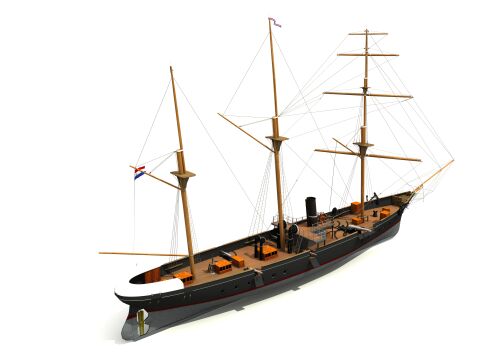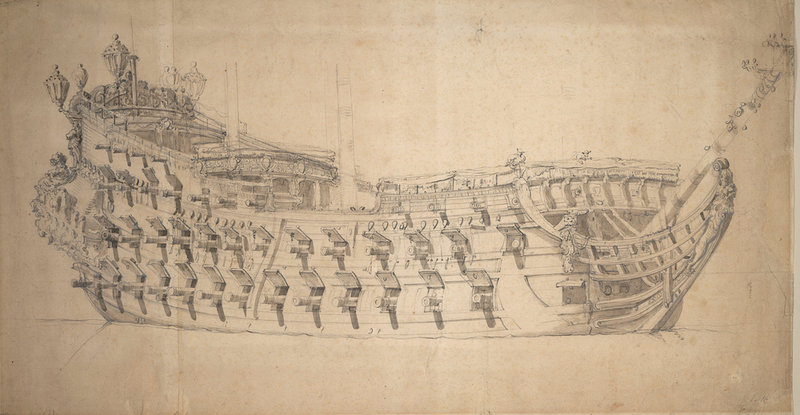-
Posts
3,515 -
Joined
-
Last visited
Content Type
Profiles
Forums
Gallery
Events
Everything posted by amateur
-
How are you going to do the ratlines ? It's increasibly small, fragile and looking good. Jan
-
Thanks, got it now Jan
- 2,625 replies
-
- kaiser wilhelm der grosse
- passenger steamer
-
(and 1 more)
Tagged with:
-
I'm a bit daft, I guess, but I can't see what you're aiming at.... However, it's my firm belief your railing will come out great! Jan
- 2,625 replies
-
- kaiser wilhelm der grosse
- passenger steamer
-
(and 1 more)
Tagged with:
-
That is a truly impressive and convincing cross-section! Jan
- 268 replies
-
Impressive modl, at 1/96. Would have to move to a larger dwelling, though Jan
- 342 replies
-
- dreadnought
- zvezda
-
(and 2 more)
Tagged with:
-
Hmmm..... Wondering... How does fully detailed look like in your definition? I wouldn't label this as schematic. More like: quite detailed. Jan
- 434 replies
-
- pelikaan
- beamtrawler
-
(and 2 more)
Tagged with:
-
Hi Kees, Looking good! Are you going to do the interior of the brigde on this one, or will there be faked glazing? Jan
- 434 replies
-
- pelikaan
- beamtrawler
-
(and 2 more)
Tagged with:
-
With respect to scale: the current market seems to ask for large scale models, to give the opportunity for detailing. Although i understand that wish, for me this is the reson not to go for a kit next. I am (still) strugling with the rigging of a Corel kit of Prins Willem, but another kit resulting in a 90centimeter model is a nogo area: i simply don't have the space to get another one in. Next model is restricted to 40 cm max, either a relatively small ship at 1:50/1:96, or a slightly largership at 1:96/1:192 There used to be a Dutch firm that did some small ships, at 1:100. Resulting models about 25 centimets (that's 10 inch for you non-metrics:)) Rather basic kits, solid hull, partly precut, basic rigging, but great starter-kits, with quite a lot of detailing-options. Firm went backrupt, and no one else continued the range. Price of these kits was relatively low, which made them perfect starters for younger builders (toy shops where the main outlet for the firm). I did them all (one still unfinished after 25 years....) This is what i mean: my third kit, at age 16, 30 years outside a glass case Jan
-
There is (was?) another thread on this topic. Overthere I posted that I would love to see a historically accurate kit at a resonable scale (1:96 or 1:192) of a Dutch two or threedecker, like the Gouden Leeuw. I would like: advanced, building time: long, price around 400 euro, (but higher is open for discussion) I would like a POF, but with the option to build the interior from th lower gundeck upwards. I would prefer serious wood, not the usual kit-stuff i would prefer historicall accurate i would prefer non-guilded, resin (?) 'carving' I would prefer fullguns, and not those silly half-guns. (At 1:192 resin casting is OK with me) I am not a large fan of an 'assembly kit' in which all parts are lasercut, and only need to put together. (Although the resulting model greatly benefits from those lasercutassembly parts) Scond type of kit iI would be seriously be tempted: navyboard style enlisch first or second rate. (Again 1:192, seriouslwood, historycally accurate, and all other remarks i madeabove) Jan
-
Don't ask.... don't ask.... sorry... couldn't resist any longer..... Are the binding strakes really parallel? Jan
-
Hi Ed, I understand the mechanism of the chain release, but how did they get these anchors overboard? Was there some kind of tackle, or.... I can't image they just worked them overboard, the risk of damage to the hull would be fairly large.... Jan
- 3,618 replies
-
- young america
- clipper
-
(and 1 more)
Tagged with:
-
Perhaps you should delete the other one. Is a bit confusing for some of us And when you are working on it: perhaps check on the little typo's in your title (unless they are there to illustrate how thick you fingers are, and how much admiration whe should have for you, still taking on a large project like this one ) Jan
-
You thought you could start without us?? No way, we'll track you down. I would have loved the shipyard at Durgerdam, ofcourse, but as you have a Rotterdam connection, I can understand you don't want to build a wharf from the region of Amsterdam Knowing your love for detail, and working parts, I would have tried a more 'workable scale'. But we'll see how you tackle hinges at 1:2000 Jan
About us
Modelshipworld - Advancing Ship Modeling through Research
SSL Secured
Your security is important for us so this Website is SSL-Secured
NRG Mailing Address
Nautical Research Guild
237 South Lincoln Street
Westmont IL, 60559-1917
Model Ship World ® and the MSW logo are Registered Trademarks, and belong to the Nautical Research Guild (United States Patent and Trademark Office: No. 6,929,264 & No. 6,929,274, registered Dec. 20, 2022)
Helpful Links
About the NRG
If you enjoy building ship models that are historically accurate as well as beautiful, then The Nautical Research Guild (NRG) is just right for you.
The Guild is a non-profit educational organization whose mission is to “Advance Ship Modeling Through Research”. We provide support to our members in their efforts to raise the quality of their model ships.
The Nautical Research Guild has published our world-renowned quarterly magazine, The Nautical Research Journal, since 1955. The pages of the Journal are full of articles by accomplished ship modelers who show you how they create those exquisite details on their models, and by maritime historians who show you the correct details to build. The Journal is available in both print and digital editions. Go to the NRG web site (www.thenrg.org) to download a complimentary digital copy of the Journal. The NRG also publishes plan sets, books and compilations of back issues of the Journal and the former Ships in Scale and Model Ship Builder magazines.






